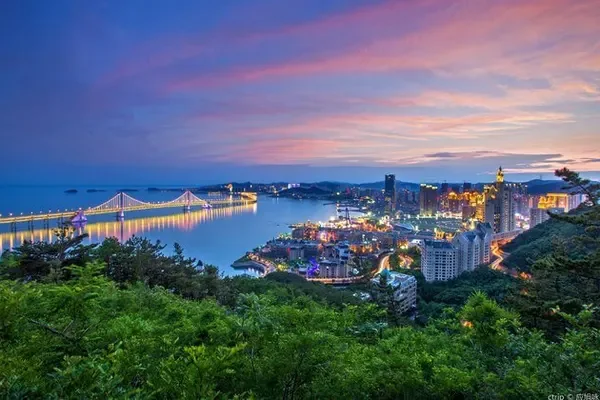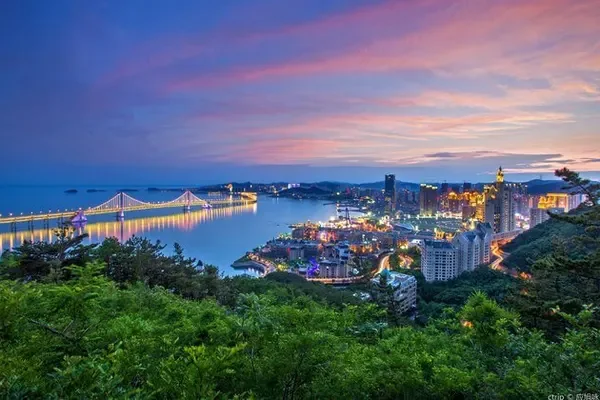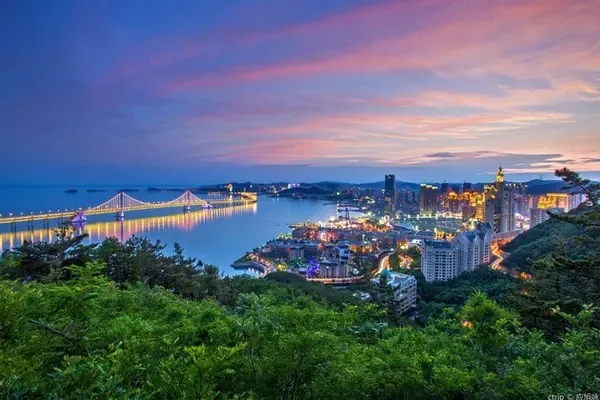In October 1936 in the northwest, it was the time of high autumn and crisp air. In this pleasant season, the ancient city of Huining was dressed in festive costumes, colorful slogans were posted all over the streets and alleys, and bright red flags fluttered in the wind above the city. On the road in the city, the colorful gate built for the meeting is particularly eye-catching. "Come here! Come!" With bursts of cheers, firecrackers, gongs and drums, the Red Army and the Fourth Army finally joined forces in Huining. The whole city of Huining was boiling, singing and laughing everywhere, beaming with joy. At the celebration of the reunion held by the two departments, the commanders and fighters of the Red Front Army presented a large number of condolences-sweaters, wool socks, gloves, etc., which had already been prepared, to the comrades of the Red Fourth Front Army. With tears of excitement, the comrades-in-arms of the two armies threw down the backpacks on their shoulders, hugged each other tightly, and exchanged greetings. Applause, laughter, and cheers, like bursts of spring thunder, resounded over Huining.
Hi---, we meet up------
It took more than 20 days to walk from Ruijin, Jiangxi Province, all the way through the thousands of rivers and mountains in the south and west of China. I witnessed and experienced the difficulties and dangers of the Red Army's Long March, and finally looked forward to the three main forces of the Red Army. At the gate of the meeting, we are equally excited!
Memorial Tower
The Memorial Tower of the Red First, Second and Fourth Front Armies join forces stands majestically. The memorial tower is surrounded by three small towers, which symbolizes the close unity of the three main forces of the Red Army.
Huining Meeting Square
Huining has a moderate altitude, deep soil, and a pollution-free environment. It has unique advantages in tourism and green production. Huining County has a long history. The county has been established in the Western Han Dynasty, and Emperor Wu of the Han Dynasty visited here on his western tour. Huining is known as "the key of Qinlong". Before the Silk Road goes from Xi'an to the bank of the Yellow River, it must pass through Huining.
Huining is a piece of thick yellow land, and at the same time it is a piece of yellow land marked with a deep red mark. Among the top ten marshals and top ten generals of the Republic awarded in 1955, nine of them each visited Huining.
Jiangtaibao is located at the confluence of Hulu River and Malianchuan River in the south of Xiji County, Guyuan City, Ningxia, 30 kilometers away from the county seat. The Qin Great Wall of the Warring States Period two thousand years ago stretched eastward through the Hulu River, and the ruins of the ancient city of the Han Dynasty can be seen faintly.
In ancient times, it was called Xiwating, a military fortress, and the title of Jiangtaibao itself already included military elements.
On October 22, 1936, the General Headquarters of the Second Red Army and the Second Red Army Corps arrived at Jiangtai Fort, Xiji County, Guyuan City, Ningxia Hui Autonomous Region, and joined forces with the Second Division, the main force of the First Red Army. Jiangtaibao joined forces after the First Red Army arrived at Wuqi Town in northern Shaanxi on October 19, 1935 to join forces with the Red Fifteenth Army Corps, and on October 9, 1936, the Red Army and the Fourth Red Army joined forces in Huining, Gansu. The last meeting in the history of the Long March was the successful meeting of the three main forces of the Red Army, marking the successful end of the Red Army's 25,000-mile Long March.
On October 2, we successfully arrived at Jiangtaibao to join forces. The 25,000-mile long march has united us tightly!
Unite as one, and from now on, the whole party and the whole army will unite around Chairman Mao's Party Central Committee!
So far, the Red Army's Long March has ended victoriously. The Red Army's Long March lasted for one year, spanning eleven provinces and traveling 25,000 miles. The Long March of the Fourth Red Front Army lasted one year and seven months, passing through four provinces and traveling nearly ten thousand miles. The Long March of the Second Red Front Army lasted eleven months, passed through eight provinces, and traveled more than 16,000 miles.
Liupan Mountain is a must pass through the northern route of the ancient Silk Road, and it is also the junction of the northern nomadic culture and the Central Plains culture. In ancient times, many ethnic groups lived here. When Genghis Khan conquered Xixia, he recuperated and recuperated here, purged the army, and died here. It is the last mountain that the Red Army crossed on the Long March. Crossing Liupan Mountain means that the destination of the Red Army's Long March is at hand.
Liupan Mountain is located at the junction of Ningxia, Shaanxi and Gansu provinces, with an altitude of more than 2,900 meters. It got this name because of the twists and turns of the mountain road, which circled six layers before reaching the top of the mountain.
On October 7, 1935, the Central Red Army crossed the main peak of Liupan Mountain and fought fiercely with the enemy at Qingshizui. With lightning speed, the Red Army achieved a great victory in less than an hour of fighting. More than 200 enemies were killed, nearly 100 enemies were captured, and more than 150 horses were captured. As a result, a reconnaissance company was equipped, and the Red Army began to have its own cavalry unit.
At the end of the battle, Mao Zedong stood on the top of a huge rocky mountain in Liupan Mountain. He became very popular in poetry and chanted a poem "Qingpingle·Liupan Mountain": "The sky is high and the clouds are clear. Look at the geese flying south. If you don't reach the Great Wall, you are not a hero. The journey is 20,000 miles. On the peak of Liupan Mountain, the red flag blows in the westerly wind. With the long tassel in hand today, when will the black dragon be bound?" This is Mao Zedong! He poetized and sublimated war! Then, he humorously said to the commanders and fighters around him: "All of you Red Army soldiers who have survived from Jiangxi to the present are all treasures! You are the seeds of revolution, and you will spread them all over the country in the near future. Blooming and bearing fruit in large areas!"
Liupanshan Red Army Long March Memorial Pavilion is located on the top of Liupanshan. The Red Army led by Mao Zedong crossed Liupan Mountain on the Long March, opening the last channel to the revolutionary base in northern Shaanxi.
The Red Army left a lot of precious spiritual wealth during the Long March. This song "Qingpingle·Liupanshan" composed by Comrade Mao Zedong when he crossed Liupanshan was widely sung by people because of its magnificent waves and grandeur.
Now on Liupan Mountain, there is a miniature landscape that reproduces the course of the Long March - the "Red Army Trail". On the 2.5-kilometer trail, 18 main scenes of the Red Army's Long March feats are reproduced with sculpture groups. From the foot of the mountain, along the winding path leading to the winding path, classic scenes such as "Blood Battle on the Xiangjiang River" and "Flying to the Luding Bridge" are presented one by one along the way.
In September 1961, at the invitation of the people of Ningxia, Mao Zedong wrote a long scroll and presented the calligraphy to the people of Ningxia, encouraging the people of Ningxia to build Ningxia with the spirit of "If you don't reach the Great Wall, you are not a hero".



